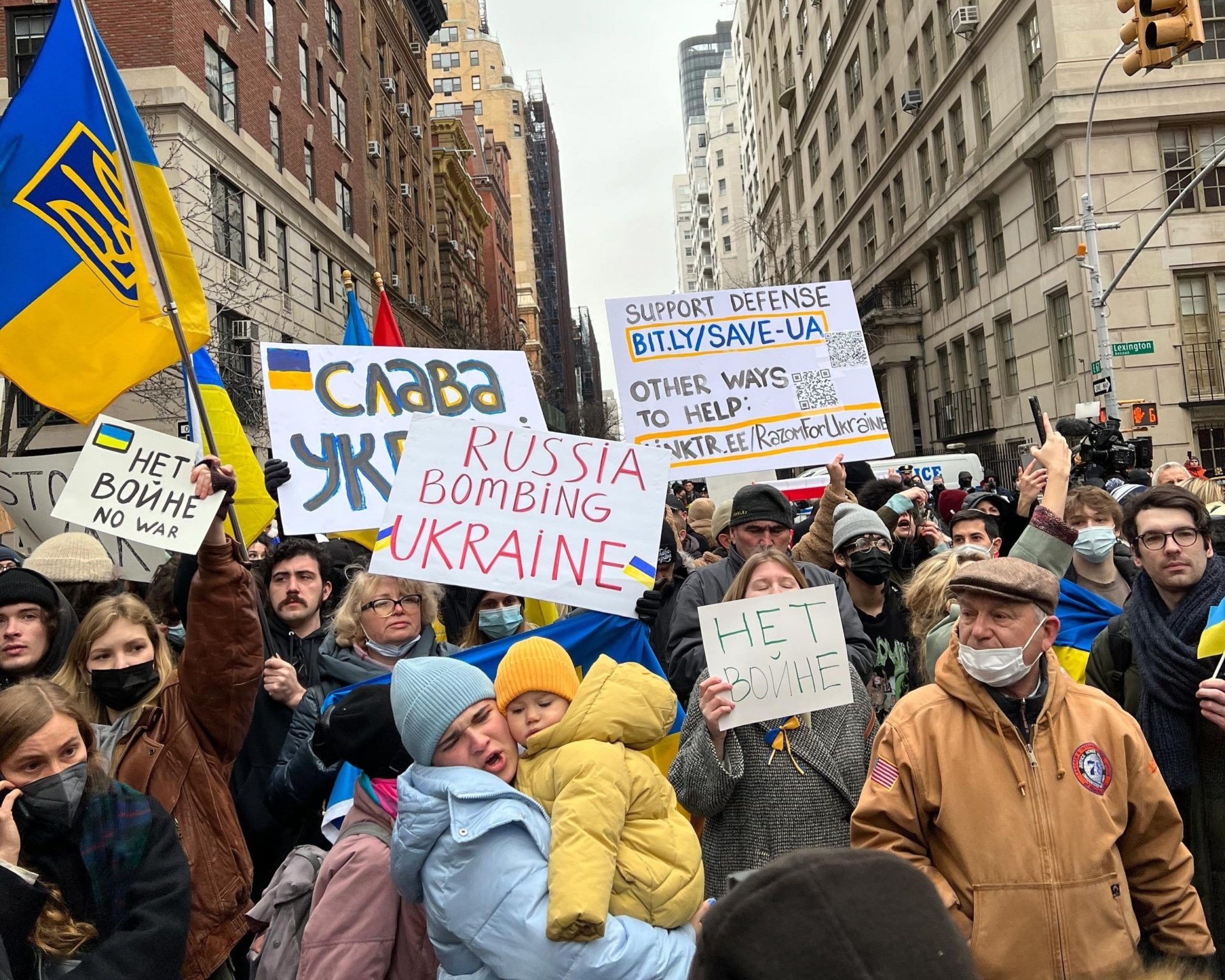
It’s time for a settlement of the war for Ukraine. No settlement will be imposed on Vladimir Putin or the Ukrainians. They’re too tough and too independent to be forced into a deal by a third party. But within their toughness and independence lies the logic of resolution.
Two-plus weeks of war has proven that settlement is infinitely preferable for both sides to a continuation of armed conflict. Ukraine has proven that eventually Russian forces will be evicted from Ukraine.
Putin may gain some measure of physical control of the cities, where most Ukrainians live, but he’ll never subjugate the people of Ukraine. If President Volodymyr Zelensky and his government lose control of Ukraine, their people will fight as insurgents, similar to how the Afghanis successfully fought off the Soviets. Moreover, the Ukrainians are more numerous and better armed than the Afghanis. The Russian nation is also smaller than the Soviet empire when it invaded Afghanistan decades ago.
Ukrainians will fight for as long as it takes to evict the Russians. The only question is when and at what cost. By now, Putin knows this.
Putin also knows that the West is choking the Russian economy. The financial walls are closing in slowly, but inexorably. Inconvenience will become hardship. While the standard of living in Russia declines, Russian corpses are returning for burial. Russian families, friends, and neighbors will ask why, soon and loudly. Hardship will weaken support for the war from opinion leaders and functionaries within Russia, and more importantly, within the Kremlin.
Putin seems to fear for his personal safety and has physically removed himself from everyone. He knows that modern Russian history is pockmarked by putsch and intrigue. What seems fanciful today may be reality tomorrow as critical mass develops and overcomes conventional wisdom. He must know he only has three states of being: in office, in prison, or dead.
So, Putin knows he needs a deal.
On the other hand, Putin has amply demonstrated that he will kill many, many thousands.
Putin would rather bomb hospitals than fortifications because he appears to think that the will to resist may be weakest among non-combatants. He hopes that the gruesome and well-chronicled deaths of women and children might move Ukrainian decision-makers more than the deaths of combatants. In this way, Putin uses the world’s media to deliver a message of horror and intimidation to Ukraine’s leadership.
No doubt, Putin has also been emboldened by Western caution. By announcing that Western forces would not fight for Ukraine by putting boots on the ground or planes in the air, NATO acquiesced to the invasion and invited Putin to fight to the last drop of Ukrainian blood.
Western leaders — applying actuarial realpolitik — appear to reason that thousands of dead Ukrainians are a lesser tragedy than the small risk, and consequences of, nuclear or full-on conventional war. Nothing epitomizes this more than the public argument between the United States and Poland about sending Ukraine 28 old fighter jets.
Putin knows that NATO is apprehensive. Bullies like him thrive on weakness. They only respect strength.
Furthermore, Putin has been encouraged by the collective yawn of much of the world. When China and India refrain from economic sanctions and abstain for voting in the United Nations, when the Saudis won’t increase oil production, and when most other nations focus only on problems within their borders, Putin knows that his hand won’t be forced by adversary, neutral, or friend.
Zelensky sees all this. He knows that victory requires both courage and force. Ukraine has courage but not force. NATO has force but not courage. Most of the rest of the world has little interest.
Zelensky knows right now that much of Ukraine and its people will be destroyed to save what remains.
So Zelensky, too, knows he needs a deal. Two-plus weeks of war have proven that without peace both sides will fight for a very long time at enormous cost in human life, health, and treasure. Both sides know they need to dial back and try to find a way out.
That’s why they are talking. That’s why Zelensky’s rhetoric on NATO membership has softened and why Putin has abandoned his absurd rhetoric about neo-Nazis and drug addicts. That’s why there have been tentative steps at humanitarian corridors.
What does a settlement look like? It might be something along these lines:
-
A ceasefire on both sides.
-
The withdrawal of Russian troops.
-
An insertion of UN peacekeepers where necessary.
-
The conducting of plebiscites in the Donbas and Crimea run by the UN with majority rule determining whether these territories are part of Ukraine or Russia.
-
A NATO pledge of no eastern expansion, and a Russian pledge of no western expansion.
There are lots of problems and unanswered questions with this plan, but they can be addressed. As Churchill said, “jaw-jaw is better than war-war.” Ukraine has proven enough to Putin, and Putin has proven enough to Ukraine such that a negotiated resolution is the logical product of their respective toughness.
Now they need to keep talking and get to yes.

Shanin Specter
Shanin Specter is a founding partner of Kline & Specter in Philadelphia. [email protected]






